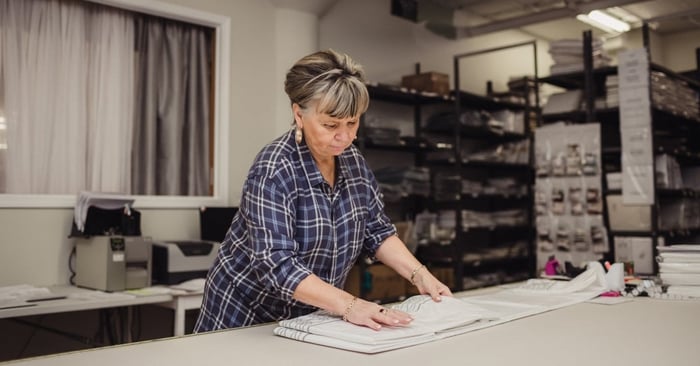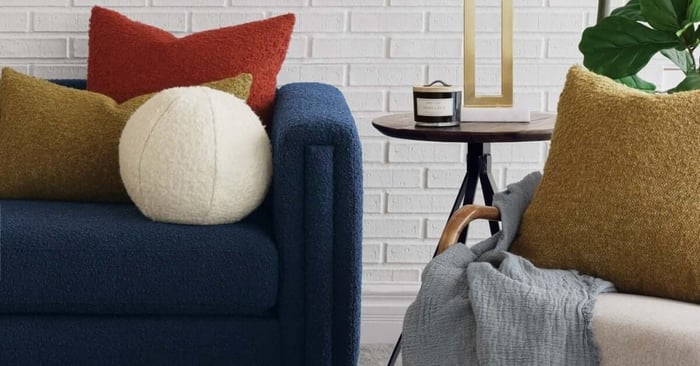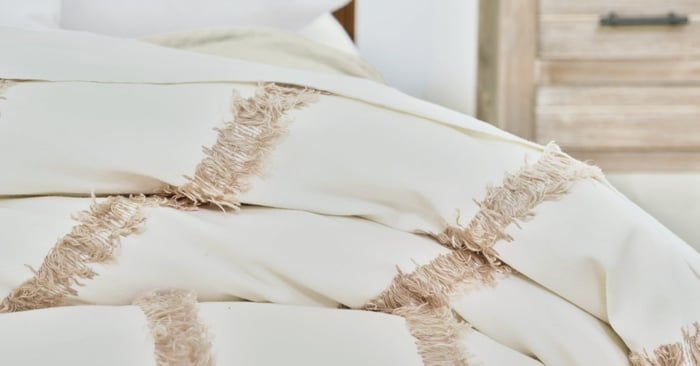Table of Contents
If you're a keen Eastern Accents observer, you might have noticed a new material getting a lot of gameplay recently. In just a few years, our Tudor real leather pillows have gone from new kid on the block to company staple.
Until recently, our line featured relatively few real leather pillows. And as much as we love our faux leathers, sometimes there is nothing like the rich texture and natural grain of the real thing. We knew needed something versatile and good: a beautiful, ethical, non-toxic leather in a rainbow of colors that could be used throughout our line. A new go-to. So our search for our Next Favorite Leather began with a lot of research... taking us on a deep-dive into the fascinating world of luxury leathercraft.

Humans have dried, tanned, and produced leather for thousands of years; the material has clothed, protected, and supported us in cultures worldwide. Traditional real leather tanning is a highly skilled and technical industry that is still alive and well today. Sustainable leathers eliminate waste by sourcing from by-products of the meat farming industry. However, not all leather manufacturers are created equal. For leather tanning to be truly sustainable and eco-friendly, the tannery has to be conscious of its environmental impact and comply with the latest government regulations.
What is leather tanning?
Natural hides are very different in texture and feel to finished leather products. They are stiff, hard to work with, and inconsistent in texture, so they have to be treated, or tanned.
This process permanently alters the protein structure of skin, making it thinner, softer, and more durable. The oldest, and the most organic, way to do this is vegetable tanning: a natural process that relies on tree tannins and water to alter the hide’s texture. With the leather industry rapidly growing in the 19th century, a less labor-intensive method, chromium tanning, was introduced into the trade. It involves using chromium salts to treat the hides and is now the most widely used tanning practice in the industry.
Anyone who enjoys real leather products knows that its charm lies within the natural imperfections and changes that happen over time. In leathermaking this is called patina, a natural process that adds character and softens leather over time.
As a manufacturer, we feel our responsibility is not to eliminate leather goods altogether, but to support sustainable leather tanning suppliers and create quality pieces that will last a lifetime.
Sourcing
When it comes to raw hides, origin and care are absolutely crucial. Leading real leather tanning companies use mostly use European hides, which means the hides are unbranded and contain very few scratches. The artistry of leather-making begins with the ethical treatment of animals, carrying on to a respect for tradition and faithful eco-friendly practices.
As a specialized textiles manufacturer, Eastern Accents feels our responsibility is not to eliminate leather goods altogether, but to support sustainable leather tanning suppliers and create quality pieces that will last a lifetime. We are honored to have the opportunity to support this remarkable craftsmanship that spans over centuries. Our leathers are sourced from leading European-based tanneries and suppliers, using the safest practices, to ensure a long-lasting product that simply feels good.
Explore our full range of leather and faux-leather pillows and other products.
FAQs
What is sustainable leather?
What is leather tanning?
Natural hides are very different in texture and feel to finished leather products. They are stiff, hard to work with, and inconsistent in texture, so they have to be treated, or tanned.
This process permanently alters the protein structure of skin, making it thinner, softer, and more durable. The oldest, and the most organic, way to do this is vegetable tanning: a natural process that relies on tree tannins and water to alter the hide’s texture. With the leather industry rapidly growing in the 19th century, a less labor-intensive method, chromium tanning, was introduced into the trade. It involves using chromium salts to treat the hides and is now the most widely used tanning practice in the industry.
What is leather patina?
Anyone who enjoys real leather products knows that its charm lies within the natural imperfections and changes that happen over time. In leathermaking this is called patina, a natural process that adds character and softens leather over time.
What countries produce good quality leather?
Leading real leather tanning companies use mostly use European hides, which means the hides are unbranded and contain very few scratches. The artistry of leather-making begins with the ethical treatment of animals, carrying on to a respect for tradition and faithful eco-friendly practices.






